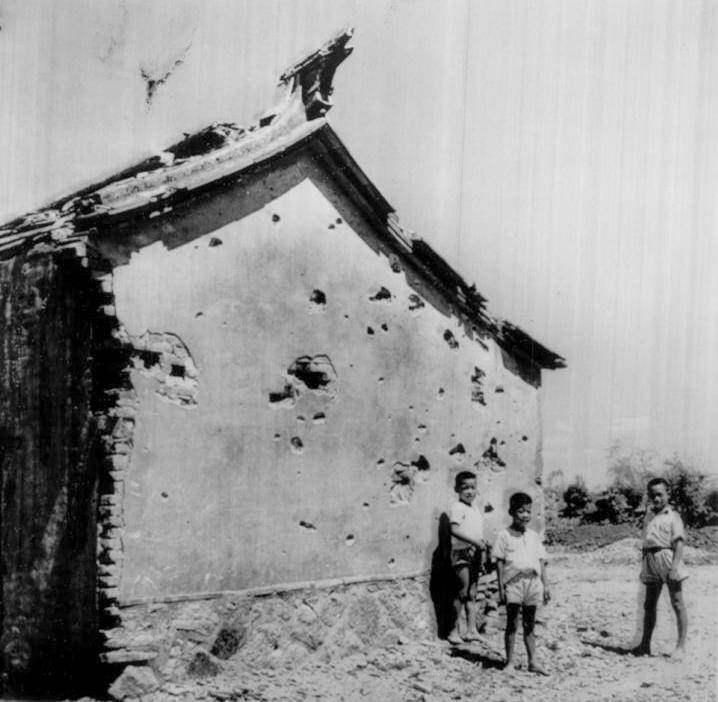
The Cold War: Taiwan--Quemoy and Matsu

Figure 1.--This press photograph was dated September 28, 1954. The photograph was captioned, "Their home shelled: Three Chinse boys stand outside their farm home, shrapne;-pocked by one of Chinese Communist shells being fired on Chinese Nationslist-held Quemoy Island where China mainland Reds sparked "vest pocket war" with big bombardment Sept. 3. Warfarme between the Formosa outpost and Red mainland has continued since then."
|
|
The Nationalist in addition to Taiwan held on to several small islands much closerr to the coast. The best known were Quemoy and Matsu. They were just 8 miles off the mainland coast. Matsu is a single island, while Quemoy is a group consisting of Quemoy, Little Quemoy, and 12 islets in Xiamen Bay. The Communists planed to inade Taiwan ans destroy the Nationalists in the final battle of the Civil War. The first step in the invasion was to seize Quemoy. The Communists landed on Quemoy in force (October 1, 1949). The resulting fighting is known as the Battle of Kuningtou/Jinmen. After bloody fighting, the Nationalists prevailed. This was a rare Nationalist victory in the Civil War. It was important because at the time the United States was not committed to the defense of Taiwan and thus the Nationslists were on theor own. The Communists realized, however, that if they could not take Quemoy, that sucessfully invading Taiwan was impossible until they had developed a much greater naval and air capability. Chiang ordered that these small islands be fortified seeing them as the route for a future campaign to retake the mainland. The Communists did overun some islands north of Taiwan. The Nationalists were able, however, to hold Quemoy and Matsu. The islands became political footballs. At times Chiang prvoked Mao and at other times Mao ordered the provcations. As the islands were in artillery range, such provocations were a simple matter. The Communist North Korean invasion of South Korea and Chinese Communist intervention (June 1950), decisively changed American policy. President Truman deployed U.S. naval units to the Taiwan Straitsmaking a Chinese invasion impossible. Quemoy and Matsu were not included in the 1955 security guarantee to Taiwan. American policy was to discourage Chiang from provoking the Communists, but support Nationalist possession of the islands. The islands surfaced as an issue in the United States 1960 presidential election.
HBC

Navigate the Boys' Historical Clothing Web Site:
[Return to Main Cold War Taiwan country page]
[Return to Main Cold War country page]
[Return to Main Communism page]
[Return to Main Taiwan history page]
[Introduction]
[Activities]
[Biographies]
[Chronology]
[Clothing styles]
[Countries]
[Bibliographies]
[Contributions]
[FAQs]
[Glossaries]
[Images]
[Links]
[Registration]
[Tools]
[Boys' Clothing Home]
Created: 6:35 AM 9/18/2010
Last updated: 6:35 AM 9/18/2010



